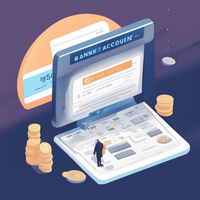Digital Banking

Introduction
Banking technology has revolutionized the way financial institutions operate, with digital banking at the forefront of this transformation. In recent years, banks have embraced technological advancements to streamline their processes, improve customer experiences, and enhance security measures. This overview delves into the concept of digital banking, exploring its key features and benefits.
What is Digital Banking?
Digital banking refers to the delivery of banking services through electronic channels such as internet banking websites or mobile applications. It enables customers to access various financial services without physically visiting a bank branch. Digital banking encompasses a wide range of activities that can be conducted online, including account management, transactions, payments, investments, and more.
Features of Digital Banking
- Online Account Management: Customers can view account balances, transaction history, and manage their accounts remotely.
- Mobile Banking Applications: Users can access their accounts using smartphones or tablets via dedicated apps.
- Electronic Fund Transfers: Facilitates seamless transfer of funds between different accounts or to external parties.
- Bill Payments: Allows customers to pay bills electronically without writing checks or visiting bill payment centers.
- E-statements: Instead of receiving paper statements by mail, digital banking offers electronic statements for easy viewing and archiving.
- ATM Services: Customers can locate nearby ATMs for cash withdrawals or deposit cheques using advanced features such as automated image capture.
Benefits of Digital Banking
- Convenient Access: Customers can perform transactions from anywhere at any time without being restricted by traditional office hours.
- Time Efficiency: Transactions are processed swiftly compared to traditional methods which involve paperwork and manual processing.
- Cost Reduction: Banks can lower operational costs by reducing human resources required for manual tasks like data entry or document handling.
- Enhanced Security Measures: Advanced encryption techniques help safeguard sensitive customer information during online transactions.
- Improved Customer Experience: With quick access to account information and personalized services, customers have a more seamless and satisfactory banking experience.
Future Trends in Digital Banking
- Artificial Intelligence (AI): AI-powered chatbots are being increasingly adopted to provide instant customer support and personalized recommendations.
- Blockchain Technology: Blockchain can enhance security, reduce fraud, and simplify cross-border payments by eliminating intermediaries.
- Biometric Authentication: Technologies like fingerprint or facial recognition enable secure access to accounts without relying on passwords.
- Open Banking: Banks are adopting open APIs (Application Programming Interfaces) that allow third-party developers to build innovative financial applications, expanding service offerings.
- Internet of Things (IoT): IoT devices can facilitate direct integration with banks for automated payment processes, enabling smart home billing and mobile wallets.
Conclusion
Digital banking has had a profound impact on the global banking industry by leveraging technological advancements to transform traditional business models. With increased convenience, improved security measures, and greater accessibility to financial services, digital banking is poised to continue evolving in an increasingly connected world. As customers embrace this shift towards technology-driven banking experiences, financial institutions must adapt their strategies to meet customer expectations and stay competitive in the rapidly changing landscape of digital banking.
Sponsored
Sponsored
Sponsored
Explore More:

Market Risk
Risk management in banking is a critical aspect of the banking industry. Managing...

Credit Risk
Risk management in banking is a critical aspect of the banking industry. Managing...

Risk Management in Banking
Risk management in banking is a critical aspect of the banking industry. Managing...

Glass-Steagall Act
The Glass-Steagall Act, also known as the Banking Act of 1933, was an...

Dodd-Frank Act
The Dodd-Frank Act, officially known as the Dodd-Frank Wall Street Reform and Consumer...

Basel Accords
Banking regulations refer to the laws, rules, and guidelines imposed by regulatory authorities...

Banking Regulations
Banking regulations refer to the laws, rules, and guidelines imposed by regulatory authorities...

Cash Flow Statement
The cash flow statement is an important financial statement for banks as it...

Income Statement
The income statement is an essential component of a bank's financial statements. It...

Balance Sheet
The balance sheet is one of the most important financial statements used by...

Bank Financial Statements
Bank financial statements provide a comprehensive overview of a bank's financial performance and...

Online and Mobile Banking
In today's rapidly evolving technology landscape, the banking industry has undergone a significant...

Credit Cards
Credit cards are one of the most prominent banking products offered by financial...

Understanding Different Types of Bank Loans: Features and Benefits for Personal and Business Financing
Loans are a core offering of banking institutions, providing individuals and businesses with...

Checking Accounts
A checking account is one of the most common banking products used by...

Saving Accounts
Introduction In the world of banking, saving accounts are one of the most...